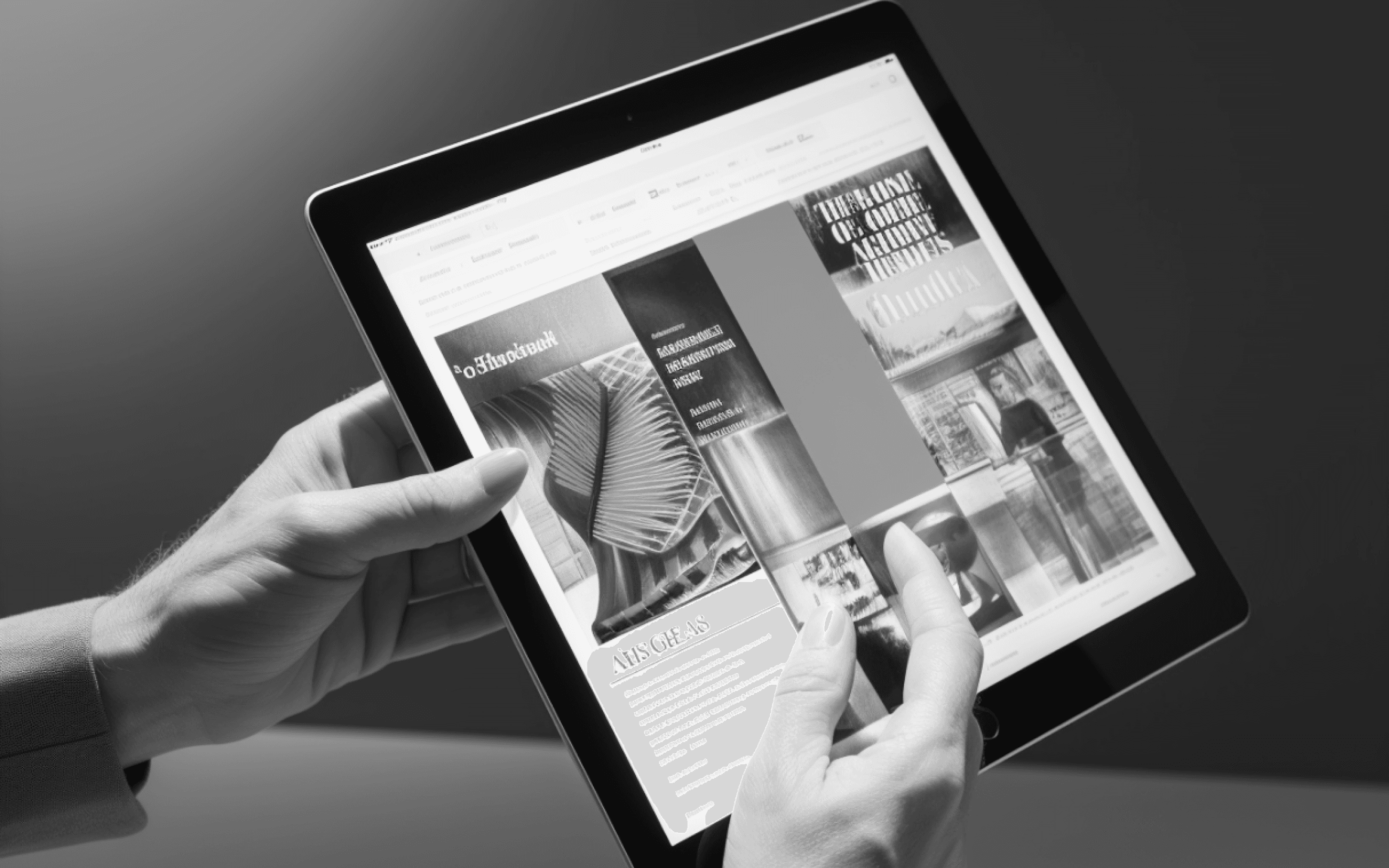From Concept to Launch: The Journey of a Mobile App Design
From Concept to Launch: The Journey of a Mobile App Design
From Concept to Launch: The Journey of a Mobile App Design
From Concept to Launch: The Journey of a Mobile App Design
aw. amirul islam
aw. amirul islam

8 PRINCIPLES FOR DESIGNING AI EXPERIENCES FOR CHILDREN
8 PRINCIPLES FOR DESIGNING AI EXPERIENCES FOR CHILDREN
8 PRINCIPLES FOR DESIGNING AI EXPERIENCES FOR CHILDREN
8 PRINCIPLES FOR DESIGNING AI EXPERIENCES FOR CHILDREN
Unveiling the Vision
The journey of designing a mobile app begins with a spark of inspiration. It starts with the conception of an idea that addresses a specific need or problem. This initial phase is crucial as it lays the groundwork for the entire project. At this stage, designers and stakeholders engage in brainstorming sessions to define the app’s purpose, target audience, and key features. Market research and user feedback play pivotal roles in shaping the concept, ensuring that the app resonates with potential users and stands out in a competitive market.
Once the vision is clear, the design team moves into the planning phase. This involves creating detailed wireframes and prototypes that illustrate the app’s structure and functionality. Wireframes serve as blueprints, outlining the layout and flow of the app’s interface, while prototypes offer a more interactive preview of the user experience. These tools are essential for visualizing the app’s design and refining its functionality. During this phase, designers collaborate closely with developers to ensure that the app’s design is feasible and aligns with technical requirements.
Bringing the Design to Life
With the design blueprint in hand, the development phase begins. This stage involves translating the wireframes and prototypes into a fully functional app. Developers write code, integrate features, and build the app’s backend infrastructure. Regular testing is integral during this phase to identify and resolve any issues related to performance, usability, and security. Testing is conducted on various devices and operating systems to ensure a consistent and smooth user experience across different platforms.
As development progresses, designers and developers work together to fine-tune the app’s visual elements and interactions. This collaboration ensures that the final product adheres to the design vision while meeting technical standards. The app undergoes multiple iterations based on feedback from testing phases, refining its functionality and design until it meets the desired quality.
The final stage is the launch, where the app is prepared for public release. This involves creating a marketing strategy to generate buzz and attract users. Promotional materials, such as app store descriptions, screenshots, and videos, are crafted to showcase the app’s features and benefits. The app is then submitted to app stores for review and approval. Once approved, it becomes available for download, and the team monitors its performance, gathering user feedback for future updates and improvements.
The journey from concept to launch is a dynamic and iterative process, marked by collaboration, creativity, and continuous improvement. Each phase—ideation, design, development, and launch—contributes to the app’s success, ensuring it delivers value to users and stands out in the crowded mobile app market.
Unveiling the Vision
The journey of designing a mobile app begins with a spark of inspiration. It starts with the conception of an idea that addresses a specific need or problem. This initial phase is crucial as it lays the groundwork for the entire project. At this stage, designers and stakeholders engage in brainstorming sessions to define the app’s purpose, target audience, and key features. Market research and user feedback play pivotal roles in shaping the concept, ensuring that the app resonates with potential users and stands out in a competitive market.
Once the vision is clear, the design team moves into the planning phase. This involves creating detailed wireframes and prototypes that illustrate the app’s structure and functionality. Wireframes serve as blueprints, outlining the layout and flow of the app’s interface, while prototypes offer a more interactive preview of the user experience. These tools are essential for visualizing the app’s design and refining its functionality. During this phase, designers collaborate closely with developers to ensure that the app’s design is feasible and aligns with technical requirements.
Bringing the Design to Life
With the design blueprint in hand, the development phase begins. This stage involves translating the wireframes and prototypes into a fully functional app. Developers write code, integrate features, and build the app’s backend infrastructure. Regular testing is integral during this phase to identify and resolve any issues related to performance, usability, and security. Testing is conducted on various devices and operating systems to ensure a consistent and smooth user experience across different platforms.
As development progresses, designers and developers work together to fine-tune the app’s visual elements and interactions. This collaboration ensures that the final product adheres to the design vision while meeting technical standards. The app undergoes multiple iterations based on feedback from testing phases, refining its functionality and design until it meets the desired quality.
The final stage is the launch, where the app is prepared for public release. This involves creating a marketing strategy to generate buzz and attract users. Promotional materials, such as app store descriptions, screenshots, and videos, are crafted to showcase the app’s features and benefits. The app is then submitted to app stores for review and approval. Once approved, it becomes available for download, and the team monitors its performance, gathering user feedback for future updates and improvements.
The journey from concept to launch is a dynamic and iterative process, marked by collaboration, creativity, and continuous improvement. Each phase—ideation, design, development, and launch—contributes to the app’s success, ensuring it delivers value to users and stands out in the crowded mobile app market.
Unveiling the Vision
The journey of designing a mobile app begins with a spark of inspiration. It starts with the conception of an idea that addresses a specific need or problem. This initial phase is crucial as it lays the groundwork for the entire project. At this stage, designers and stakeholders engage in brainstorming sessions to define the app’s purpose, target audience, and key features. Market research and user feedback play pivotal roles in shaping the concept, ensuring that the app resonates with potential users and stands out in a competitive market.
Once the vision is clear, the design team moves into the planning phase. This involves creating detailed wireframes and prototypes that illustrate the app’s structure and functionality. Wireframes serve as blueprints, outlining the layout and flow of the app’s interface, while prototypes offer a more interactive preview of the user experience. These tools are essential for visualizing the app’s design and refining its functionality. During this phase, designers collaborate closely with developers to ensure that the app’s design is feasible and aligns with technical requirements.
Bringing the Design to Life
With the design blueprint in hand, the development phase begins. This stage involves translating the wireframes and prototypes into a fully functional app. Developers write code, integrate features, and build the app’s backend infrastructure. Regular testing is integral during this phase to identify and resolve any issues related to performance, usability, and security. Testing is conducted on various devices and operating systems to ensure a consistent and smooth user experience across different platforms.
As development progresses, designers and developers work together to fine-tune the app’s visual elements and interactions. This collaboration ensures that the final product adheres to the design vision while meeting technical standards. The app undergoes multiple iterations based on feedback from testing phases, refining its functionality and design until it meets the desired quality.
The final stage is the launch, where the app is prepared for public release. This involves creating a marketing strategy to generate buzz and attract users. Promotional materials, such as app store descriptions, screenshots, and videos, are crafted to showcase the app’s features and benefits. The app is then submitted to app stores for review and approval. Once approved, it becomes available for download, and the team monitors its performance, gathering user feedback for future updates and improvements.
The journey from concept to launch is a dynamic and iterative process, marked by collaboration, creativity, and continuous improvement. Each phase—ideation, design, development, and launch—contributes to the app’s success, ensuring it delivers value to users and stands out in the crowded mobile app market.


